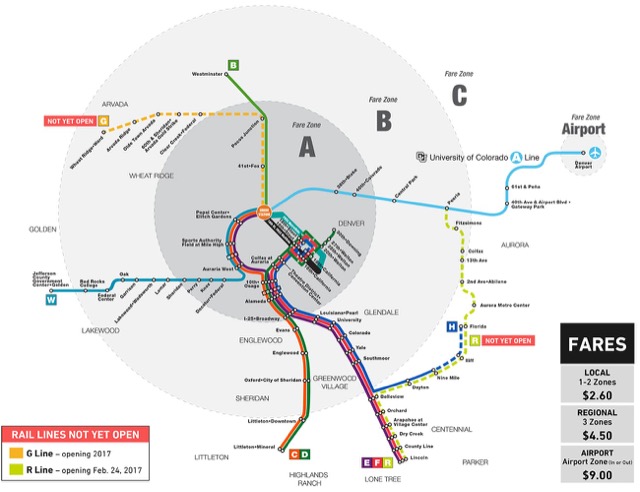Today, Denver’s Regional Transit District is celebrating the opening of a new 10.5-mile light-rail line in Aurora, Denver’s largest suburb. Part of the only planned rail route in Denver that isn’t focused on downtown, the line–which holds the distinction of already having killed a pedestrian before it even opened–is supposed to allow people at the Denver Tech Center, a large employment center in south Denver, to get to the airport without going all the way downtown first.
The green dashed line, known as the R line, opens today. Click image for a larger view.
The problem with this idea is that light rail is s l o w. The new line will average 16.5 miles per hour. Getting from Belleview, one of the Tech Center stations, to the airport by rail transit will require a change of trains in Peoria. The R-line is expected to take 45 minutes to get from Belleview to Peoria, and the A-line takes another 21 minutes from Peoria to the airport. Add to that up to an hour of wait time–both trains operate on 15-minute headways during rush hour and every 30 minutes the rest of the day–and you have a trip that can’t compete with driving, which takes just 26 minutes from the Tech Center to the airport. Plus, the Tech Center is so large that many offices are not within easy walking distance of a light-rail stop.








